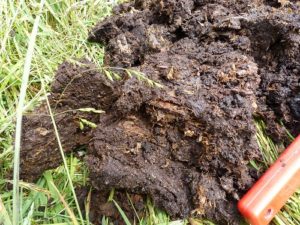Soil
Home > Soil > Considerations > Peat soils
Peat soils
Peat soils are mainly characterised by their high organic matter content, ranging from 30 to 60%. Peat soils occur mainly in the western and northern Netherlands. In the subsoil, we often find sand in the north and clay in the west of the country. Sometimes there is a covering layer of clay on top of the peat. Peat soils are characterised by their low pH and drainage capacity.

Peat soils are almost always used for grassland, with some vegetable or tree cultivation and, occasionally, maize. A characteristic feature of peat is decomposition. On the one hand, this means nitrogen is continuously released while, on the other, the peat disappears over time due to decomposition. This can cause compaction and, consequently, soil subsidence.
To prevent this, the groundwater level must be kept high, limiting agricultural use.
The more moisture the soil contains, the lower its bearing capacity. Peat soils therefore require the right machine with limited attachment weight and wide tyres with reduced tyre pressure (1 bar). Underwater drainage can also be used. Several studies show that bearing capacity increases with underwater drainage. Sand also improves bearing capacity, while clay can actually reduce it.
Sources:
Bokhorst, J. (2006). Bodem onder het landschap. Roodbont uitgeverij. Zutphen. ISBN 90-75280-94-7. 136 p.
Eekeren, N. van en B. Philipsen (2014). Goed bodembeheer op veen boert beter. WUR Livestock Research, Veenweide Innovatiecentrum, PPP Agroadvies en Louis Bolk Instituut Publ. Nr. 2014-005-LbD. 20p. www.louisbolk.nl.
Jongmans, A.G., M.W. van den Berg, M.P.W. Sonneveld, G. Peek en R. van den Berg van Saparoea (2012). De landschappen van Nederland; geologie, bodem, landgebruik. Wageningen Academic Publishers.
Koopmans, C.J., J. Bokhorst, C. ter Berg en N. van Eekeren (2012). Bodemsignalen. Praktijkgids voor een vruchtbare bodem. Roodbont Uitgeverij, Zutphen. 96 p.


